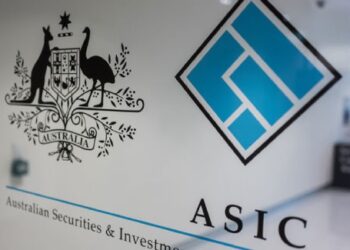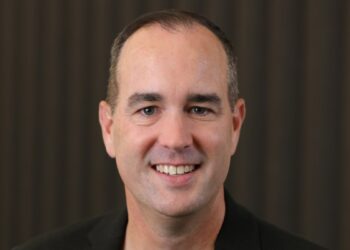Tim Sanderson, senior technical manager at Colonial First State, said the abolition of the work test has allowed members to make voluntary contributions up to age 74, including that 28-day period after the end of the month that they turned 75, without needing to satisfy any work test.
In a recent podcast for FirstTech, Mr Sanderson said CFS is seeing an increase in commuting existing pensions to implement this strategy but warns it brings an additional layer of complexity.
“This contribution strategy is normally something advisors will think about when a client gets to retirement as part of commencing their pension. But with the abolition of the work test, all of a sudden, we’re seeing members who are already retired, and then are looking to cash out and re-contribute, as we no longer need to worry about that work test,” he said.
He explained that there are two reasons clients are looking at re-contribution strategies.
Firstly, it allows them to convert a taxable component of the super into a tax-free component that result in lower Death Benefits Tax applying depending on member circumstances and beneficiaries at the time of death.
Secondly, can allow couples to even up and equalise their super balances and therefore maximise the amount of benefits that they can get into tax-free retirement phase under the transfer balance cap rules.
Mr Sanderson said although tax avoidance rules are a concern he believes that for a member using the re-contribution strategy member they generally obtain any tax benefit.
“For example, their lump sum is tax-free, and they don’t get any tax benefit from re-contributing the amount as non-concessional contribution either.”
“Instead, any tax benefit that may accrue will benefit the potential non-dependent beneficiaries via reduced Death Benefits Tax in the future. But even that’s uncertain and purely hypothetical, because at the time, we’re actually doing the strategy, those beneficiaries might not end up receiving that death benefit, there might be nothing left upon the client’s death, or the death benefit might end up going to other beneficiaries.”
He warned, however, that if a client is commuting a pension to implement a re-contribution strategy, they need to consider the pension commutation rule.
“I’ll focus on account-based pensions, because they’re the most common type of pension that we’re going to be commuting.”
“If we’re doing only a partial computation, it’s pretty easy, we just need to make sure that the balance remaining straight after that commutation is at least equal to the remaining pension payment that we have to pay in that financial year.
“But if we’re fully commuting, so for example, we’ve got $330,000 in our account-based pension, and that’s the amount we want to re-contribute, then we need to make sure the member’s at least received a pro-rata minimum payment before that lump sum is paid.
“If you’re a member of a large fund, such as CFS, then we’re going to administer that for you. But if you a member of an SMSF you need to be more careful.”
For an SMSF member, he continued, they will have to ensure that if they are doing a full computation, then before that is paid, they’ve already received that pro rata pension payment right up to the relevant computation date.
“The risk is, if that’s not done, then the pension potentially fails the pension standards and there’s a lot of tax implications for that.”
It is also important for clients and advisers to think about what they should do with the re-contributed amount such as starting a new pension or refreshing the original pension.
“If the client has multiple accounts, by starting a second pension, they also need to be careful of account keeping fees and consider if the fund will charge the client for each account, rather than just one admin fee across all accounts.”
“Also, depending on a client’s circumstances, having a second pension may also be better from an estate planning perspective, it may bring about the benefit of dual pension, as you’re essentially running a dual pension strategy, which can have a range of benefits.
“Imagine that we’ve now got one pension that’s made up 100 per cent taxable component, the other one with 100 per cent, tax-free components.
“If we’ve got non-dependent beneficiaries, we send the account with all the tax-free component off to those non-dependent beneficiaries and then the spouse or other dependent beneficiaries from a tax perspective could be given the pension account with all the taxable components, therefore reducing any potential death benefits taxes.”
He said if a client decides to start a new pension they will still need to draw the annual minimum payment for the original pension as well as draw down a pro-rata amount from that new pension.
“That could mean the client has to take more income in that financial year than they would otherwise like but one option would be to delay starting that new pension until on or after 1 June in the financial year.”
“There is also the 1 June rule, which says that if you commence the pension on or after that date, you don’t have to draw a minimum payment for that one month of the financial year.”
“You have to be careful, though, and to make sure that the fund is going to be able to process the cash-out and get the money back into the fund and also commence a pension all within that period before 1 July, because you don’t want to miss out on the client actually generating any income from 1 July onwards.”



Recontribution strategies are good to minimize tax when benefits eventually transfer to non dependents but be aware that manipulating existing pensions may impact on entitlement to the Commonwealth Seniors Health Care Card . Tread carefully .
100% correct in your warning and the tax benefits are a contingent asset (assuming there will be pension assets remaining come death). The flip side is of course the “loss” on CSHC is never certain nor the centrelink assessment of legacy pensions. Further you have future legislative risk as governments continue to struggle to fund the costs of an aging population. The best strategy is, as always, it depends.